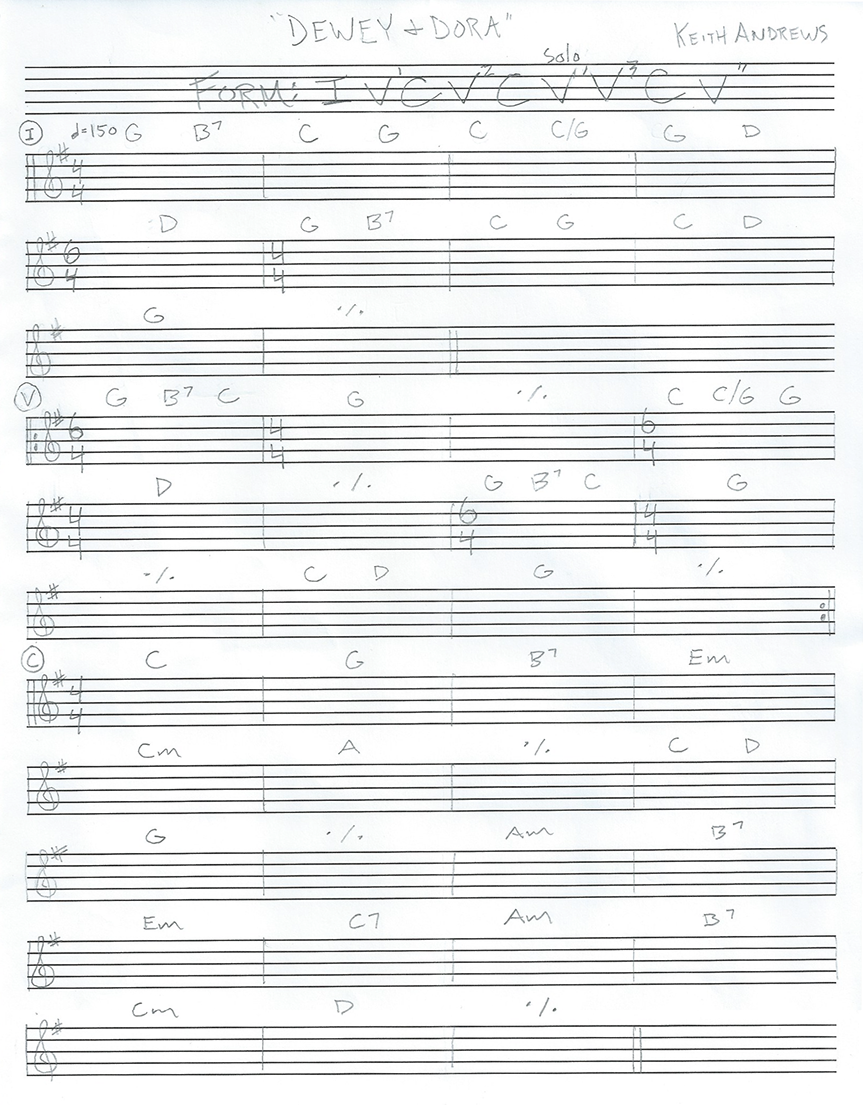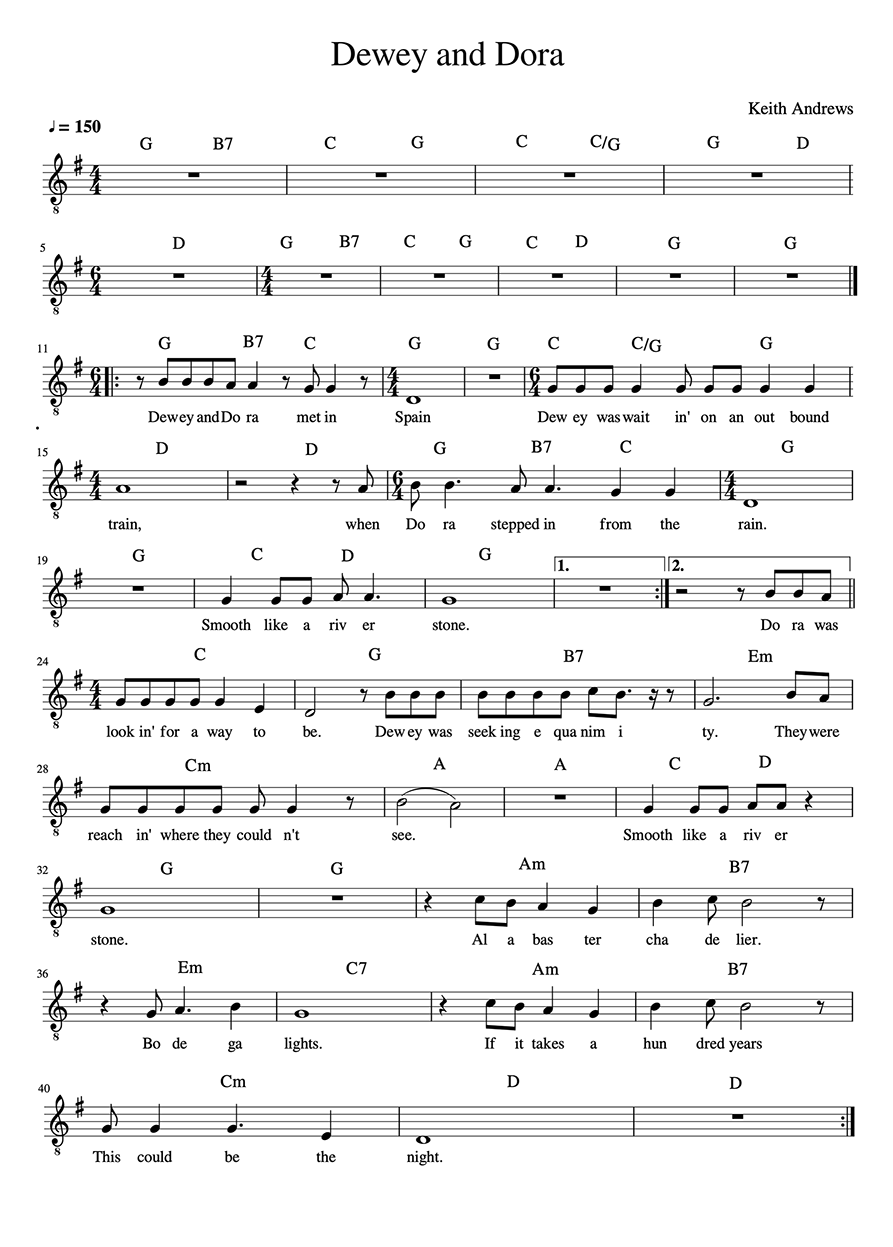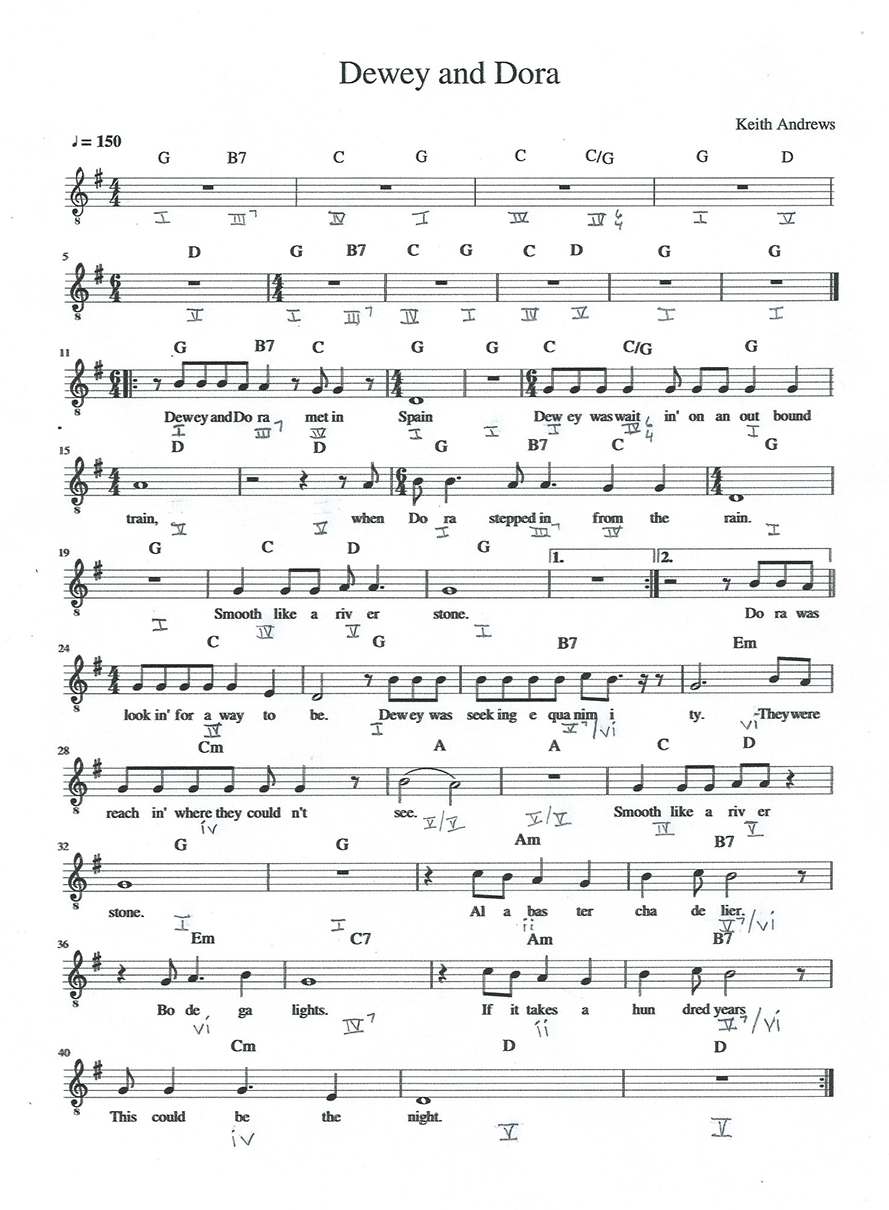
HOSTS- Jeremy Burns, Matthew Scott Phillips
TYPE- Special Topics
DURATION- 93:43
BUMPER MUSIC- "Dewey and Dora's Last Waltz" (Keith Andrews/Area 47 Music),
"Dewey and Dora" (Keith Andrews)
ANNOUNCER- Mike Cunliffe
In part 1 of this series, we heard an original song (by one of our own listeners) for the first time. By the end of that episode, we put "Dewey and Dora" (by Keith Andrews) to paper with key and time signatures, tempo and a chord chart! Now it's time to round it out with lyrics and a melody, in proper lead sheet fashion!
TRANSCRIPTION- To transcribe a piece of music is to write it down on paper (or design it in a digital notation format) in a fashion that another musician can translate back to music.
LEAD SHEET- This is a stripped down, notated representation of a melody or a song. It shows the key signature, the meter, the tempo (and the changes thereof) within one line of notation. In addition, the chords, melody and lyrics are also given within the same line.
METRONOME- This device clicks out a beat according to what tempo you set it at. It can also be used as a reference when trying to find the tempo of a piece of music.

BE SURE TO USE A PENCIL. EVERYONE MAKES MISTAKES!
-We have already determined our sections and have designated them as I (intro) V (verse), C (chorus).
-After a few good listens, we are now able to chart the order of all the parts. It will look something like this:
FORM: I V1 C V2 C V' V3 C V''
-I've added the number after each verse, in subscript on the chart below, for the sake of a little more detail. One could argue that they are unnecessary.
-Notice that, after the second chorus, there is an instrumental break that occupies 1/2 the amount of time of the verse it's self. So to distinguish it from any other verse, we have added the PRIME symbol in subscript. This looks like a "V" with an apostrophe. We will call it "V PRIME".
-There is a "tag" at the very end that takes even less time than our V' but still adheres to the melodic, harmonic and rhythmic content of the verse. Therefore, we will distinguish this tag as V'', or "V DOUBLE PRIME".


WE HAVE NOW ABANDONED OUR HAND MADE CHART FOR A PROPER, DIGITALLY DESIGNED LEAD SHEET. THE SOFTWARE WE USED WAS A FREEWARE APPLICATION CALLED MUSESCORE.
-The two main elements of this melody are those of notes and of rhythm.
-Since we know the starting chord, one of those 3 chord tones (G, B and D, in this case) would be a good place to start. Sing the TONIC. Is that the starting note? Not this time. Sing what you think the starting note is and try to sing down to the TONIC. In this case, we got to the tonic in 3 notes. So we know our starting note to be on the 3rd (B).
-Try to tap, clap or snap while you sing the words to find out what notes get what values.
-Notice the sections are distinguished by the "double bars".
-Notice the repeated sections are notated by the "double dots".

For a download of the MIDI file for this song click here.
Of course, this is optional. But it's a good practice to notate the Roman numeral-based harmonic analysis. This information can help if you need to transpose this music. In the graphic below, see where we've added this analysis right beneath the lyrics for the above measure.

-For a full listen of "Dewey and Dora" click here.
-To learn more about Keith's songwriting process, please enjoy this BONUS interview! It was truly a pleasure getting to chat with him!
-To hear more of Keith's music, check him out on Reverb Nation.

